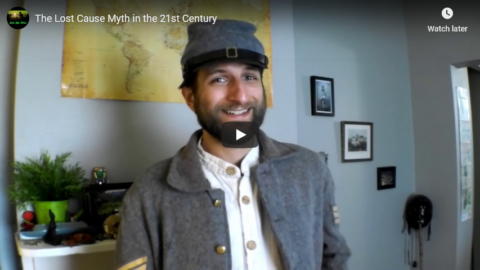The Great War
Published 19 Sep 2020Let’s take a look at our world 100 years ago, in September 1920.
» SUPPORT THE CHANNEL
Patreon: https://www.patreon.com/thegreatwar» OUR PODCAST
https://realtimehistory.net/podcast – interviews with World War 1 historians and background info for the show.» BUY OUR SOURCES IN OUR AMAZON STORES
https://realtimehistory.net/amazon *
*Buying via this link supports The Great War (Affiliate-Link)» SOURCES
» MORE THE GREAT WAR
Website: https://realtimehistory.net
Instagram: https://instagram.com/the_great_war
Twitter: https://twitter.com/WW1_Series
Reddit: https://reddit.com/r/TheGreatWarChannel»CREDITS
Presented by: Jesse Alexander
Written by: Jesse Alexander
Director: Toni Steller & Florian Wittig
Director of Photography: Toni Steller
Sound: Toni Steller
Editing: Toni Steller
Motion Design: Philipp Appelt
Mixing, Mastering & Sound Design: http://above-zero.com
Maps: Daniel Kogosov (https://www.patreon.com/Zalezsky)
Research by: Jesse Alexander
Fact checking: Florian WittigChannel Design: Alexander Clark
Original Logo: David van StepholdContains licensed material by getty images
All rights reserved – Real Time History GmbH 2020
September 20, 2020
Our World 100 Years Ago – September 1920 I THE GREAT WAR
The CBC’s latest bit of “mission creep”
At The Line, Jen Gerson wonders what the hell the CBC thinks it’s doing with this move:
Let us take a moment to leverage a little credibility under the CBC’s ass.
What the fuck is the CBC playing at, here? The corporation receives a cool $1 billion in public funding per year and it’s using taxpayer funds to, yet again, horn into the revenue streams of private communications outlets. No one — literally not a single Canadian taxpayer who isn’t already employed by the CBC — wants to throw money at a public broadcaster so that it can: “Help Canada’s strongest brands shape and share inspiring stories across our platforms and across the country.” Vomit.
No one asked for a taxpayer-funded advertising firm, you goddamn loons.
This is yet another classic example of one of the most dysfunctional habits of the MotherCorp: mission creep. A massive and rudderless operation unfettered from the practical limitations of profit-seeking has proven itself unable to restrain its own boneheaded impulses.
We, at The Line, can hear the pitiable defences already: “Oh, but they’re already underfunded. Of course they need to, uh, use their incredible taxpayer-funded competitive advantage to eat into the dwindling revenue streams of failing private media outlets just to survive!”
No. No. No they do not.
When faced with a dysfunctional hydra-headed cultural behemoth that is demonstrably incapable of keeping its mandate in its pants, the first impulse should not be to shovel ever-more taxpayer funds into the ever-widening maw. The CBC could respond to *cough* “inadequate funding” by narrowing its scope and focus to the things that make it most necessary to the Canadian public that it serves — radio, news, documentary, serving regions and topics that the private sector cannot adequately penetrate. Instead it goes off and does weird shit like this, and CBC Comedy, and CBC Music.
CBC. Guys.
You cannot be everything to everyone. You shouldn’t be everything to everyone. Canadians are not well served by a monopolistic government-funded one-stop #content communications shop. Figure out what you do best and stick to it. Focus on supplementing — rather than crushing — private-sector journalism. Maybe even consider ways to support private-sector start ups and independents, especially in local markets. “Revenue generation” is not the place where a public broadcaster should demonstrate self-defeating, industry-following innovation.
The Lost Cause Myth in the 21st Century
Atun-Shei Films
Published 23 Feb 2019A former Gettysburg tour guide talks about how the American Civil War is remembered today.
Support Atun-Shei Films on Patreon ► https://www.patreon.com/atunsheifilms
#CivilWar #Confederacy #AmericanHistory
Watch our film ALIEN, BABY! free with Prime ► http://a.co/d/3QjqOWv
Reddit ► https://www.reddit.com/r/atunsheifilms
Twitter ► https://twitter.com/alienbabymovie
Instagram ► https://www.instagram.com/atunsheifilms
Merch ► https://atun-sheifilms.bandcamp.com
QotD: The anti-slavery movement
“William Wilberforce,” writes Eric Metaxas in his book Amazing Grace, “was the happy victim of his own success. He was like someone who against all odds finds the cure for a horrible disease that’s ravaging the world, and the cure is so overwhelmingly successful that it vanquishes the disease completely. No one suffers from it again — and within a generation or two no one remembers it ever existed.”
What did Wilberforce “cure”? Two centuries ago, on March 25th 1807, one very persistent British backbencher secured the passage by Parliament of an Act for the Abolition of the Slave Trade throughout His Majesty’s realms and territories. It’s not that no one remembers the disease ever existed, but that we recall it as a kind of freak pandemic — a SARS or bird flu that flares up and whirrs round the world and is then eradicated. The American education system teaches it as such — as a kind of wicked perversion the Atlantic settlers had conjured out of their own ambition.
In reality, it was more like the common cold — a fact of life. The institution predates the word’s etymology, from the Slavs brought from eastern Europe to the glittering metropolis of Rome. It predates by some millennia the earliest laws, such as the Code of Hammurabi in Mesopotamia. The first legally recognized slave in the American colonies was owned by a black man who had himself arrived as an indentured servant. The first slave owners on the North American continent were hunter-gatherers. As Metaxas puts it, “Slavery was as accepted as birth and marriage and death, was so woven into the tapestry of human history that you could barely see its threads, much less pull them out. Everywhere on the globe, for 5,000 years, the idea of human civilization without slavery was unimaginable.”
Mark Steyn, The [Un]documented Mark Steyn, 2014.








